Ostman Abduction Story Stands Up
Posted by: Loren Coleman on June 29th, 2010
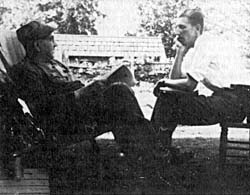
Albert Ostman (above, being interviewed by John Green) claimed he was abducted by a family of Bigfoot in 1924. No matter how silly that story may sound out-of-context, his descriptions of Sasquatch have actually stood the litmus test of time.
At the 2003 International Bigfoot Symposium, in a presentation by John Green, the subject of the Sasquatch kidnapping of Albert Ostman was touched upon. In 2006, at Cryptomundo, Craig Woolheater published these comments, and they are still read and misunderstood by readers. Recently, someone sent in a comment claiming John Green had overthrown his opinion on the Ostman story based upon their reading of the 2006 Cryptomundo posting.
Therefore, I would like to post this extraction from that talk, once again, with Green’s permission, for your perusal. It is clear that while Green has received much grief down through the years for interviewing and publishing the Ostman story, he feels it is a valid account.
In this time of much talk about Bigfoot contactees, we must acknowledge that the first ultimate contactee story was from one, Mr. Albert Ostman.
In Green’s own words, here is his 2003 statement below. I would recommend all truly involved in this research should also re-read his 1978 overview of this case in his classic book, Sasquatch: The Apes Among Us.
In this respect I have my own cross to bear, the Albert Ostman story. How could we have taken seriously his tale about being carried off in his sleeping bag by a big male Sasquatch, being kept corralled in a box canyon with a family that included an old lady, a young male and a younger female, and escaping by getting the old male to swallow a box of snuff?
Albert was a very believable fellow, who handled tough cross-examination with cheerful composure, swore to his story without hesitation, and stuck to it until he died, but I wouldn’t believe him if he were telling it today.
Today, however, he would have easy sources for his descriptions of those four individuals and what they did. When his story came to light, in 1957, the opposite was the case.
Sasquatch were not commonly thought of as completely hair-covered creatures living much the same life as a bear, instead their public image was that of a tribe of giant Indians, hairy only on their heads, who lived in villages, held annual get-togethers on a special mountain, and used signal fires.
His descriptions, so contrary to the media image of his time, have stood up wonderfully well over the years. More than that, he was questioned for hours by Daris Swindler and the veterinarian from the Seattle primate center, and they told me that the physical details and the actions he said he had witnessed all rang true.
Did he actually observe such creatures, in whatever circumstances? There is just his story, with no supporting evidence, and that is unfortunate, because there are elements in his story that would be very significant but are not confirmed by subsequent reports. No one else, to my knowledge, has claimed that the females go out and gather food to bring back to a home place, or that Sasquatch sleep in woven blankets of bark and moss, and while there is indeed a widespread assumption that they live in family groups the bulk of evidence suggests, to me at least, that they do not.
Green, of course, is a journalist, and by now, one of the most important Sasquatch investigators of all time. But he is not an anthropologist, so he must be excused for his opinion that family groups of Sasquatch do not exist. Since most sightings are of probable independent juveniles and other interlopers, there may be no correlation between the most frequent (individual) Sasquatch sightings and whether or not they live in small bands, family groups, pairs, or individually. It is all speculation from the human point of view, after all.
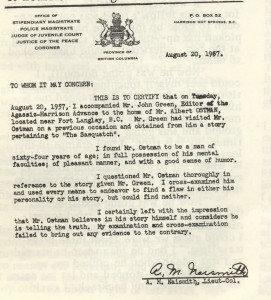
Bigfoot chroniclers such as John Green and Ivan T. Sanderson who actually interviewed Ostman, noted his belief that he had been snatched as a mate for mating purposes with the young female Sasquatch. But here, as in the entire Bigfoot field then, the discussion of sexual matters was taboo. It is instructive to note, as I did in my book Bigfoot!: The True Story of Apes in America., how Sanderson describes this part of his interview with Ostman.
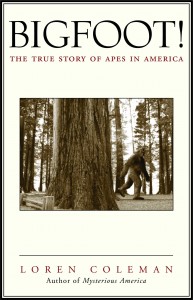
Sanderson found it difficult to obtain primatological details from Ostman about one of the four Sasquatch: “The young female was very shy; she did not approach Ostman closely but kept peeking at him from behind the bushes. He could not estimate her age, but remarks that she was without any visible breast development and was, in fact, quite flat-chested. Like her mother, she had a very pronounced upcurled bang across her brow-ridges. This was continuous from temple to temple. Curiously, no amount of questioning would prompt Mr. Ostman to elaborate any further on this individual, which may in part be psychological since it seems to be his conviction that he had been kidnapped as a potential suitor for her, and I think,” writes Sanderson, “he was a sort of subconscious and rather touching modesty about her shyness. Mr. Ostman maintains a delightful old-world delicacy about the proprieties and neatly turned aside some purely biological questions with such noncommittal phrases as ‘wouldn’t know about that.’”
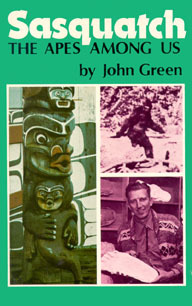

Ostman did have a bit more to say about the males. Don Hunter, writing for Rene Dahinden, in their co-authored book, Sasquatch, noted that in “subsequent talks with Rene, Ostman made particular reference to the size of the old male Sasquatch’s penis. He indicated that the head was hooded with skin and in this respect resembled that of a stallion–but only in this respect. He seemed puzzled by the fact that the old man’s was only about two inches long. Now, if Ostman had been fantasizing about the Sasquatch family, it would seem logical that he would have endowed the male with much more impressive equipment than this, to match the rest of its giant stature And the instance becomes even more interesting when we consider that the gorilla, the biggest of all known primates, itself has to make do with a penis of about two inches in length.”
In email exchanges with me about this in recent years, John Green recalls that Ostman did describe the penis as “like an inverted funnel, which sounds horse-like.” Green, writing in On the Track of the Sasquatch, does not mention these details but on the reality of the overall story wrote: “It is hard to see how Mr. Ostman, whose story was one of the very earliest, could have known so much without having had an opportunity for close observation of all the individuals he describes, and any sequence of events that could make such observations possible would be certain to sound unbelievable.”
As Hunter notes in his book with Dahinden, when Ostman was confronted with an individual’s reservations with his detailed story, he would reply: “I don’t care a damn what you think.”
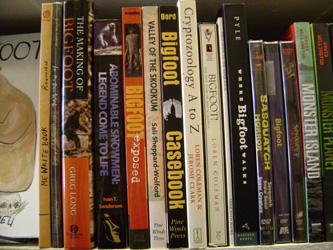
+++++++++
Please, if you can, do…
Thank you, and come visit the museum at 661 Congress Street, Portland, Maine 04101.
About Loren Coleman
Loren Coleman is one of the world’s leading cryptozoologists, some say “the” leading living cryptozoologist. Certainly, he is acknowledged as the current living American researcher and writer who has most popularized cryptozoology in the late 20th and early 21st centuries.
Starting his fieldwork and investigations in 1960, after traveling and trekking extensively in pursuit of cryptozoological mysteries, Coleman began writing to share his experiences in 1969. An honorary member of Ivan T. Sanderson’s Society for the Investigation of the Unexplained in the 1970s, Coleman has been bestowed with similar honorary memberships of the North Idaho College Cryptozoology Club in 1983, and in subsequent years, that of the British Columbia Scientific Cryptozoology Club, CryptoSafari International, and other international organizations. He was also a Life Member and Benefactor of the International Society of Cryptozoology (now-defunct).
Loren Coleman’s daily blog, as a member of the Cryptomundo Team, served as an ongoing avenue of communication for the ever-growing body of cryptozoo news from 2005 through 2013. He returned as an infrequent contributor beginning Halloween week of 2015.
Coleman is the founder in 2003, and current director of the International Cryptozoology Museum in Portland, Maine.

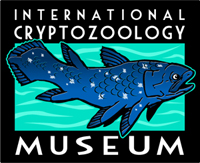










A couple of things bother me. One is that nothing like this kidnapping has been reported since. Another is that there are no other accounts of weaving and no discoveries of woven objects.
A couple of things bother me. One is that nothing like this kidnapping has been reported since. Another is that there are no other accounts of weaving and no discoveries of woven objects.
Actually, as I point out in my book, other cases have surfaced of the attempted kidnappings of males (not females) by Bigfoot. That such stories have been reported may indicate that more may exist but are underreported due to the ridicule factor.
Regarding “weaving,” those that track the reports of braiding of horse manes would disagree with the assumption this is a rare occurrence.
A couple of questions:
Wouldn’t Ostman’s descriptions of the woven blankets be more in line with primate nest-building behavior, especially as witnessed by someone with no prior knowledge of such behavior?
How does the description of a Sasquatch penis from Ostman’s account compare to that seen in the Redwoods video?
While Ostman’s account is interesting (especially insofar as the specifics of his descriptions have been borne out by subsequent reports), that’s about it — it’s interesting. Unfortunately, as proof, it bears no more weight than does Autumn Williams’ “Enoch.” Until such time as information in those and other witness accounts can lead to a method of observing the creatures at will, or until and unless the stories are confirmed by a specimen in hand, they’re just stories. They don’t even rank as evidence — no matter how many times they’re reprinted or dredged up for discussion.
They’re fun to think about, but let’s not delude ourselves that our belief that someone is telling the truth constitutes proof.
I’m in total agreement with RandyS.
Will add:
Ostman (like William Rowe) came forward with their “stories” in 1957, only AFTER, as a publicity stunt, John Green’s town council of Harrison Hot Springs announced plans to sponsor a “Sasquatch Expedition” inviting Swiss adventurer René Dahinden to lead it. The stunt was a hit, generating major regional publicity. Green, then editor of the local paper himself wrote, “Perhaps never before has a tourist resort achieved such publicity without actually doing anything.”
Also troubling is that Albert Ostman claims he kept the story entirely secret for over 33 years. Therefore he was unable to produce any brother, uncle, sister, wife, friend, drinking buddy or anyone else he had spoken to about that experience until 1957. Seriously? Correct me if I’m wrong, but in everything I remember reading about Ostman, he was a talker and enjoyed attention.
As for his credibility, I’m certain many people found Bernie Madoff to also be very credible.
Haven’t forgotten the arguments about Ostman’s supposed “insights” into hominid behavior either. But isn’t it amazing how when you start out with a theory or belief how easy it is to find corroboritive evidence?
It’s a great story. But it’s not evidence.
Course, on Bigfoot, Sasquatch or any unkown North or South American ape I’m a big skeptic so if you’re a believer please consider the source.
Thanks for this post. In my initial reading of Green’s comments, it seemed he questioned the Ostman story. On second reading, his comments read more ambiguously. Thanks for clearing up the issue.
I can’t add much more to RandyS and corrick’s comments except the following. It is known that Ostman made his adventure public after William Roe’s account
made the news (he actually revealed his story via a letter to Roe). Green’s note that Ostman’s Sasquatch was foreign to the contemporary popular belief in the giant Indian identity of Sasquatch is true, but overlooks the possibilty he simply borrowed the bipedal ape idea from Roe’s event (if not from the popular image of the yeti).
Also, Daegling in his BIGFOOT EXPOSED notes that Dahinden interviewed Ostman more than once and tried to reconstruct a timeline for Ostman’s adventure. Dahinden eventually concluded that Ostman’s story was “totally impossible.”(p.69)
Daegling also mentions another bigfooter’s negative view: “Barbara Wasson, a psychologist by training, found the Ostman’s story fit better as a projection of his imagination than a recollection of a real event.” (p.69)
Corrick writes:
“”Also troubling is that Albert Ostman claims he kept the story entirely secret for over 33 years. Therefore he was unable to produce any brother, uncle, sister, wife, friend, drinking buddy or anyone else he had spoken to about that experience until 1957.””
Corrick,
Didn’t some in the area already hear of the Ostman story previously? I might be wrong but I’m pretty sure that Green was told about the story of a “young Swede who claimed he was carried away by one of them” and that’s how he got in touch with Ostman?
Perhaps Loren can confirm? I always thought Green had heard a rumour of the story first.
Fair question. And I’m certainly no Bigfoot expert.
What I do know chronologically is that in 1957, first came the Harrison Hot Springs town council publically inviting René Dahinden to search for “Sasquatch” and the ensuing regional publicity. Only then did first, William Rowe and a week later, Albert Ostman step forward and “officially” offer their stories.
I should have been more specific. Interweaving of branches, etc. in creating nests is observed behavior in some apes. Ostman attributed slightly more sophisticated weaving to sasquatch, but no one before or since Ostman has ever reported sasquatch making woven objects, and no one has found anything that might have been woven by sasquatch.
(Braiding of horses’ manes, as I am sure Loren knows, is a story going back to medieval Europe at least and used to be blamed on witches or fairies (or, by the Algonquin, the Abenaki, the little people). Attributing such alleged occurrences to sasquatch, short of catching the critter in the act, seems a stretch. For one thing, why would a horse just stand there and permit a huge unfamiliar animal to mess with it?)
I’m sort of brainstorming here. Ostman was pretty clearly not describing sasquatch as a great ape: Sanderson and Napier, among others, compared his sasquatches to giant furry, technologically primitive humans. That does not make them impossible, of course, but extremely unlikely to my way of thinking from an ancestry point of view (At the same time, the fact that sasquatches are overwhelmingly reported as traveling alone sounds more like human than pongid behavior.)
Getting back to making a point, the kind of family group culture Ostman described, with sasquatches residing in a fixed campsite, should have resulted in finding such campsites: we find nests of apes, even of rare species.
Relating to comments concerning the possibility Ostman told others of his amazing adventure prior to the 1950s, Green wrote (THE BEST OF SASQUATCH BIGFOOT):
“The only other information that has come to my attention which appears to have a bearing on the Ostman story was a comment by an old friend of mine that he had first heard of the sasquatch in the early 1930’s from a trapper at Toba Inlet who said he knew a young Swede who had been carried off by one.” (p.34)
Concerning the Roe and Ostman connection, Buhs notes (BIGFOOT:the Life and Times of a Legend): “Green published Roe’s account in his newspaper and a little while later, Albert Ostman, a retired logger, wrote to Roe, saying that he too had seen a Sasquatch-actually four-but had kept the story to himself for more than thirty years because he feared being ridiculed.” (p.60)
One story from that time that I always thought was relatable was the report of the Sasquatch being transported by train and broke free or just disappeared, I believe it was coming from Hope and heading towards Vancouver, it was earlier 1880’s I believe but if I recall correctly I think the descriptions of the two “Sasquatch” were similar.
Jerrywayne,
Thanks for the quote. Yes that it what I was thinking of. Cheers.
Further appeal to the literature….
quatchibc,
It seems you may be recalling the “Jacko” incident, wherein a newspaper report in 1884 told of a small ape-like creature allegedly captured near Yale, B.C. and caged at a local jail. This story was initially accepted by bigfooters Green and Sanderson, but later generally rejected due to further research by Green. I refer you to Loren’s BIGFOOT: The True Story of Apes In America (p.41-42) for the details.
MattBille’s argument certainly damages the credibility of the Ostman account. Buhs suggests Green funnelled the more ape-like aspects of Ostman’s descriptions of Sasquatch in his articles while downplaying the story’s (Sasquatch as) primitive human aspects. For me, the entire Sasquatch phenomena has a curious admixture of ape and human elements.
It is true that Sanderson seemed to believe Sasquatch represented a proto-human species. But I am not sure how seriously his view should be taken. Concerning the gorilla, Sanderson wrote “Seeing these creatures in life, listening to their calls and talk … I can only regard them a retrograde form of human … life” (from his Animal Treasures, 1937, and quoted in the late Martin Gardner’s FADS AND FALLACIES In The Name of Science (p.131-132).